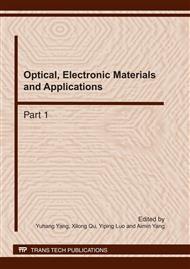[1]
I.F. Akyildiz, W. Su, Y. Sankarasubramaniam, et al, Wireless sensor networks: a survey, Computer Networks, 38(4), ( 2002), p.393−422.
DOI: 10.1016/s1389-1286(01)00302-4
Google Scholar
[2]
F. Sivrikaya, B. Yener, Time synchronization in sensor networks: a survey, IEEE Network Magazine, Special Issue on Ad Hoc Networking: Data Communications & Toplogy Control, 18(4)( 2004)pp.45-50.
DOI: 10.1109/mnet.2004.1316761
Google Scholar
[3]
Zhetao. Li, Renfa. Li, Liangjiao. Liu, Ranged-based clock synchronization protocol for wireless sensor network. Information Technology Journal, 8(5), ( 2009)pp.776-780.
DOI: 10.3923/itj.2009.776.780
Google Scholar
[4]
Zhetao, Li, Renfa, Li, Yehua Wei. Coordinated Algorithm for Time Synchronization and Distance Measurement in Wireless Sensor Network. Jisuanji Yanjiu yu Fazhan (Computer Research and Development), Vol. 47, no. 4, (2010)pp.638-644.
Google Scholar
[5]
The Network Simulator - ns-2. http: /www. isi. edu/nsnam/ns/index. html.
Google Scholar
[6]
S. Ganeriwal, R. Kumar, and M. Srivastava, Timing-sync protocol for sensor networks, In: Proceedings of the First ACM Conference on Embedded Networked Sensor Systems (IPSN'04), ACM Press, (2003)pp.138-149.
DOI: 10.1145/958491.958508
Google Scholar
[7]
J. Elson, K. Romer, Wireless sensor networks: A new regime for time synchronization, ACM SIGCOMM Computer Communication Review, 33(1), (2003) pp.149-154.
DOI: 10.1145/774763.774787
Google Scholar


